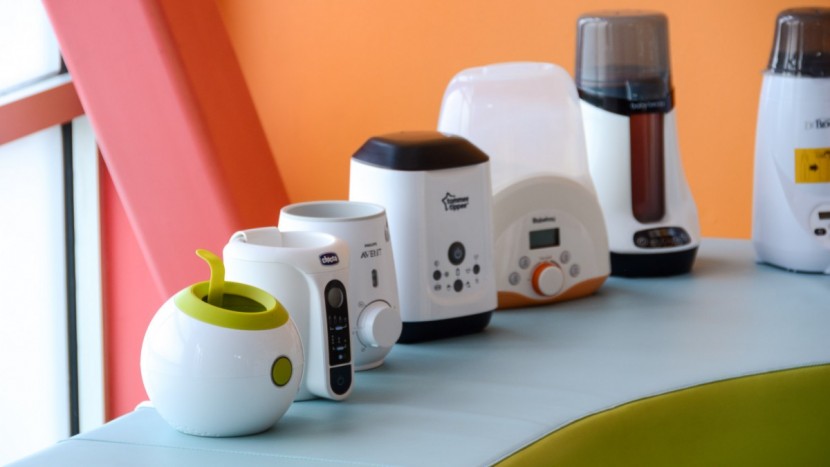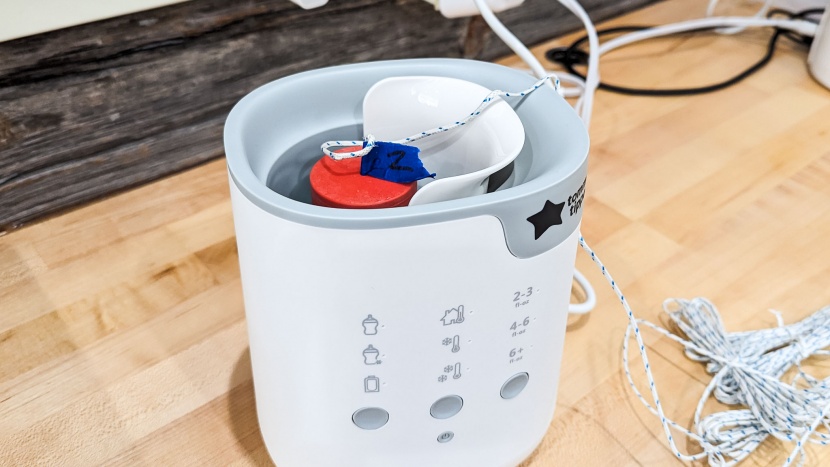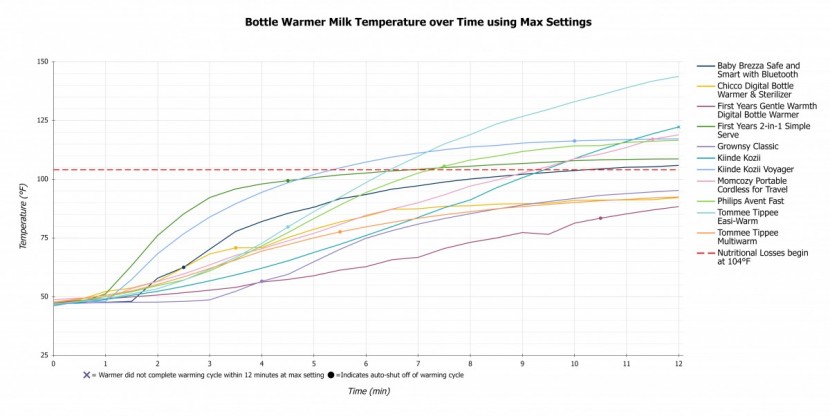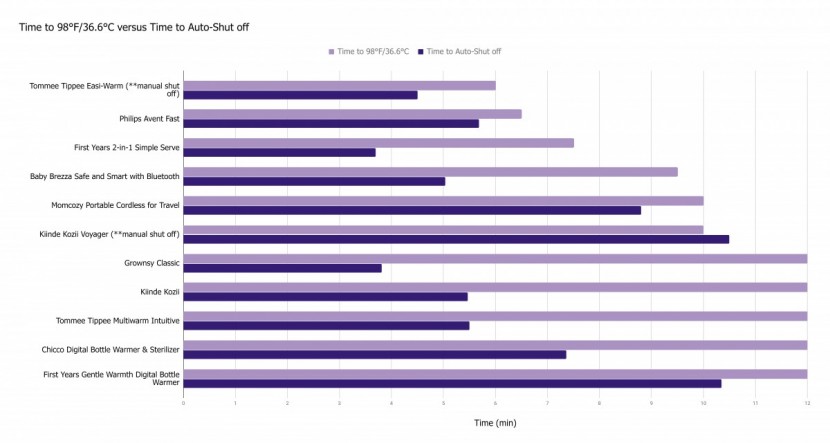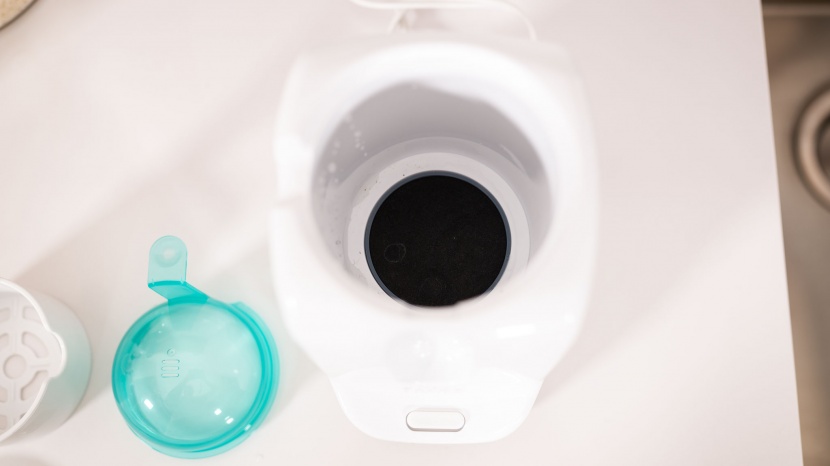Our main objective while testing bottle warmers is to assess if each could warm a bottle of milk consistently and efficiently without overheating or damaging the contents' nutritional value. Secondary factors include ease of use and cleaning. We test each warmer extensively and perform hours of research to ensure we include the best products on the market.
Health and Safety Testing
We perform two different controlled tests using the same protocol for each warmer. The bottle contents were all at identical temperatures, and the tests were run at the highest/hottest settings. We anticipate that bottles may be forgotten and left in the unit longer than the recommended time, so they continue heating. To recreate this scenario, we keep the bottle inside the warmer and measure temperatures for a full 12 minutes. We track the temperatures over time to determine on average, when each warmer creates temperatures that surpass the 104F degree when nutritional degradation can potentially begin.
In our tests, we use a glass bottle with a silicone sleeve. Silicone is an insulator, so it takes longer to conduct heat than glass alone or plastic. Therefore, our milk temperature measurements are likely low side when compared to a plastic bottle. However, the times are still accurate relative to one another and give an objective indication of which warmers heat faster than others.
Manufacturer Warming Recommendations
Closely following the manufacturer's instructions for the recommended warming cycle, we record milk temperatures consistently using a device that tracks the time and temperatures in real-time. We note the temperature at the time of auto-shutoff, and if there is no auto-shutoff feature, we let the warmer run for a total of 12 minutes, then take a final reading.
Maximum Heat Settings
In addition to recommended usage, we also test each product by cranking a room temperature warmer to its maximum settings, using the same setup of 4 ounces of refrigerated milk in a Lifefactory glass bottle and the included sleeve. We record temperatures consistently for 12 minutes.
Why did we do this?
We don't condone stepping outside the manufacturer's instructions, but let's face it, not everyone is going to play by the rules. We suspect some parents will attempt to heat the bottle as fast as possible when faced with a crying baby, potentially disregarding manufacturer recommendations. We test how high the temperatures ascend when the warmer runs at full throttle for 12 minutes to assess the potential damage.
Quickness of Warming
We use 98℉ as our ideal standard milk temperature to evaluate warming efficiency. Reason? That is roughly the temperature of milk coming straight from the breast, and we assume your baby prefers this warmth. Warmers that bring the milk closer to 98℉ receive higher scores for this metric. We also consider auto shut-off features and warming wait time during our warming tests.
Manufacturer Recommendations: Auto Shut-Off Time & Temperature
Following each manufacturer's warming recommendations, we record the time and temperature at auto shut-off.
Warming Consistency
We used each warmer according to the manufacturer's instructions for five trials to determine how consistent each warmer was at heating bottle contents. We tracked the time and temperatures using a device that recorded the details for later comparison. We then compared the values to determine the temperature ranges at the time of auto-shutoff up to 12 minutes to determine which options create the most consistent temperatures over trials.
Ease of Use
When assessing ease of use, we consider how simple it is to get the product ready for its first use right out of the box, the number of pieces to assemble, ease of day-to-day operation, and the clarity of instructions. We carefully read the directions, review the initial assembly, and note how easy it is to use daily or nightly. Over several months, we found that elements such as the warming chart's clarity and the ease of adding water make a difference in obtaining consistent results. We appreciate simple units for a caregiver to use without significant coaching.
Ease of Cleaning
Each warmer includes directions to use a damp cloth to wipe all surfaces (inside and out) at least every other day. They all require occasional descaling for the removal of hard mineral deposits to keep them in good working order. Descaling frequency varies for every warmer and depends on the water hardness in your home. It can range anywhere from once a week to once a month.

